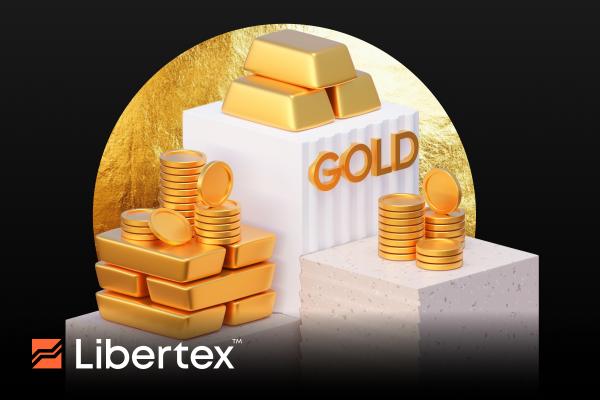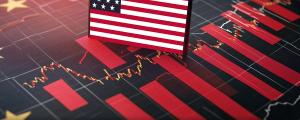It’s been a wild ride for gold of late. The yellow metal has gained more than 40% since the start of the year, an unusually high rate of return for this traditional inflation hedge. To put things into perspective, throughout the worst of the pandemic (early 2020 to mid-2022), gold barely increased 20%. There are multiple reasons for this year’s uncharacteristically rapid growth: ongoing geopolitical tensions in both Europe and the Middle East, sticky inflation, and, of course, Trump’s tariff crusade and subsequent trade war with China. Washington famously placed tariffs as high as 145% on Chinese goods before announcing exemptions for consumer electronics amid pressure from adversely affected Mag Seven companies. Despite insisting Xi Jinping must make the first move, China held firm and refused to kowtow to US economic aggression.
Then, following Trump’s back-tracking on virtually all of the triple-digit levies on China and his reversal of calls to fire Fed chair Jerome Powell, the spot gold price fell as much as 1.5% to $3268 per Troy ounce on 28 April before reversing its loss to settle back above $3300. That said, it’s still 5.1% lower than its $3500 local maximum. With stock markets once again rising and optimism surrounding an equitable Sino-US trade deal growing, is this the end of gold’s impressive bull cycle, or could we yet see more gains to come? In this article, we’ll look at the internal and external factors likely to impact the price of gold throughout the rest of 2025.
Pressure drop
US inflation fell in March to 2.4% (compared to 2.8% in February), which now puts it within touching distance of the US Federal Reserve’s target of 2%. Core inflation, however, remains relatively high at 2.6%. Donald Trump has called for a rate cut multiple times in his recent series of derogatory comments against Jerome Powell and the CME’s FedWatch tool now predicts the likelihood of a rate reduction in May at over 50%. Traditionally, this would be bad news for gold, as it would boost the attractiveness of risk assets like stocks and make safe havens less enticing for investors. However, given the uncertainty surrounding global trade and the already weakened US dollar, any further watering down of the greenback’s value would only drive precious metal prices higher. And with crude oil around $60 a barrel on average and the more direct shipping routes still under threat, the cost of production for many products is increasing steadily – even without the impact of tariffs.
As many companies begin to reshore as much of their production process as possible in a bid to avoid the impact of future tariffs and for reasons of national security, uninterrupted supply, and IP protection, prices will inevitably increase as a result of the increased capital expenditure such an endeavour entails. The labour market, too, is showing signs of cooling. According to the US Bureau of Labour Statistics, there were about 7.19 million job openings in the US, down 288,000 from a month earlier and 901,000 (11%) from a year earlier. All of this would suggest that gold’s bullish cycle is not yet over, and we might well expect to see more upside in 2025.
Out of control
In the second battle of the US-China trade war, it is clear that Trump has blinked first after removing many of the tariffs and softening his rhetoric significantly against the PRC. While Trump’s actions and comments are a positive sign that a US-China trade deal could soon be on the cards, there is no deal as of yet, and the Chinese insist that negotiations have not even begun, contrary to Trump’s recent statements that talks were going well. Given the US President’s inherent volatility and preoccupation with always appearing strong and in control, we can’t rule out another escalation in tensions.
Furthermore, the other Liberation Day reciprocal tariffs announced against many of the US’s closest trading partners have not been scrapped but rather paused for 90 days. In the absence of deals with all 57 sanctioned countries by the end of summer, all of these tariffs will automatically enter into force and drive inflation (and, by extension, the price of gold) higher. Central banks, too, will continue to drive gold prices higher on account of accelerated buying and their attempts to build strong reserves to hedge against the rising geopolitical uncertainty. Since 2022, central banks have purchased an average of around 1,000 tonnes of gold per year, more than double their previous decade’s annual average. Following Trump’s November 2024 election win, central bank purchases shot up 54% year over year to 333 tonnes in that final quarter alone, according to an estimate from the World Gold Council (WGC). The combination of persistent uncertainty and increased demand should drive prices higher in the medium term, though a fast resolution to the trade war and various global conflicts could subdue the price of gold.
Trade gold and more CFDs with Libertex
With Libertex, you can trade CFDs on a wide variety of assets, from stocks, ETFs and indices to crypto, options and, of course, commodities. Aside from gold (XAU/USD) and silver (XAG/USD), Libertex also offers CFDs in a varied range of other commodities. For more information or to create a live trading account of your own, visit www.libertex.com/signup today!


